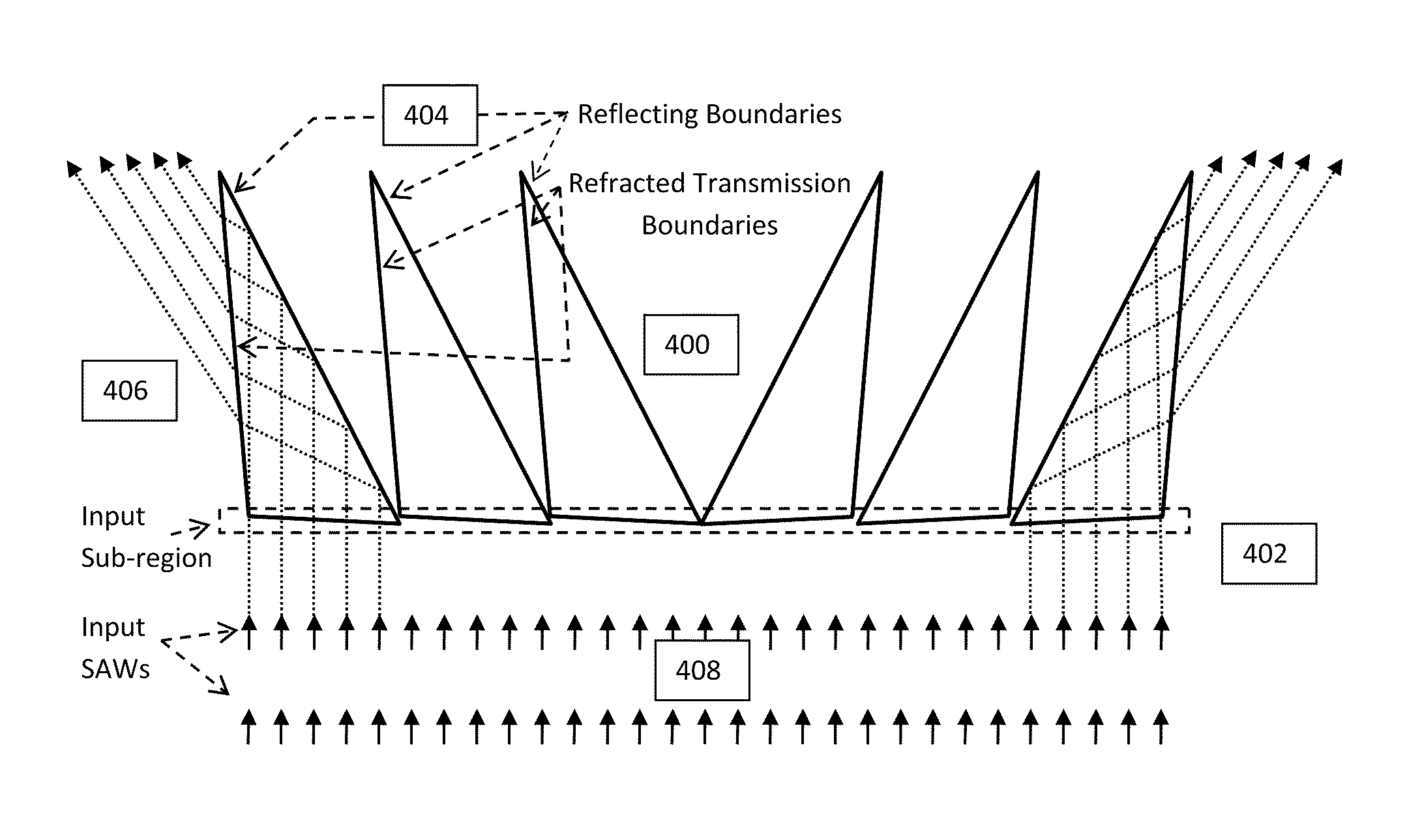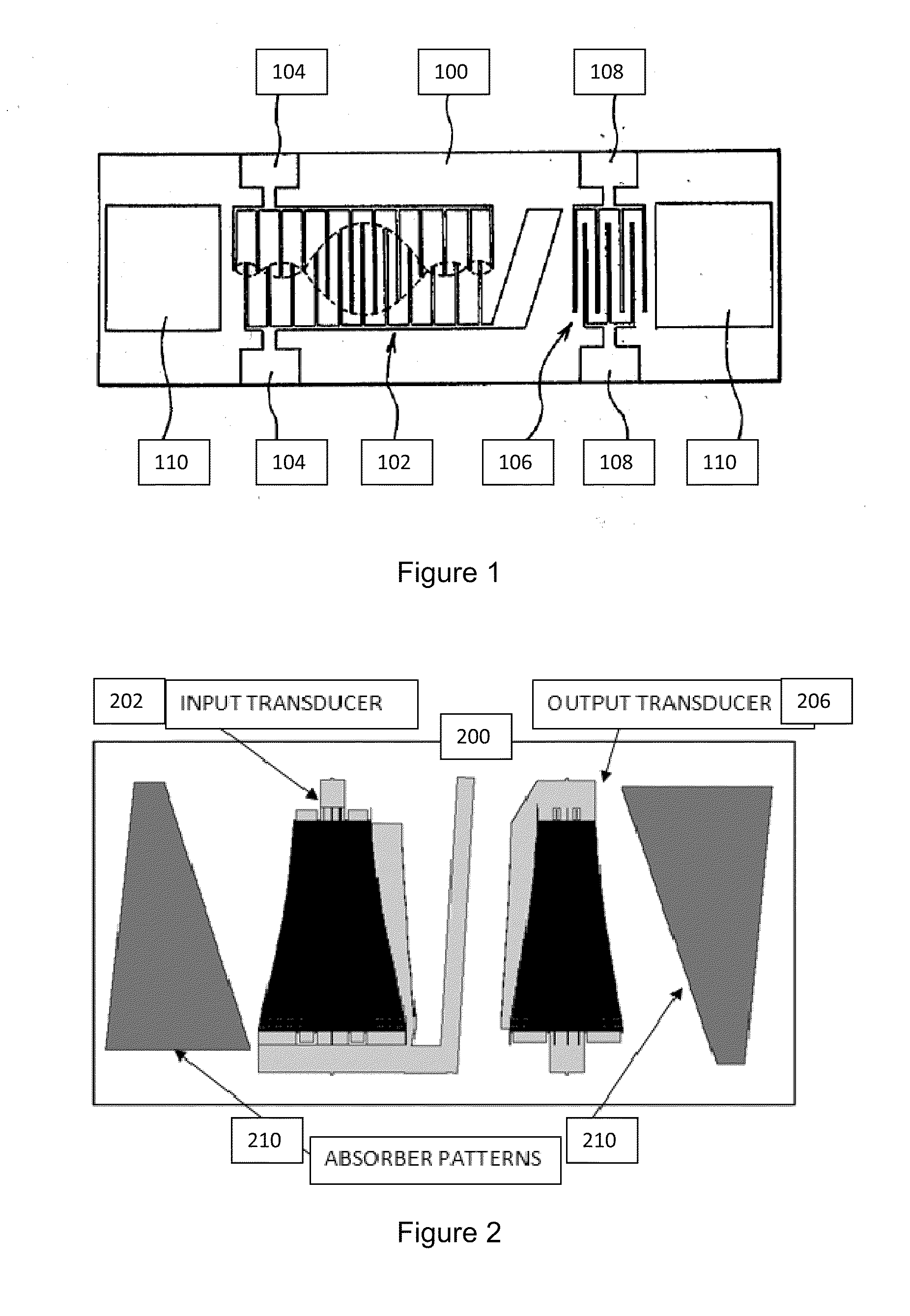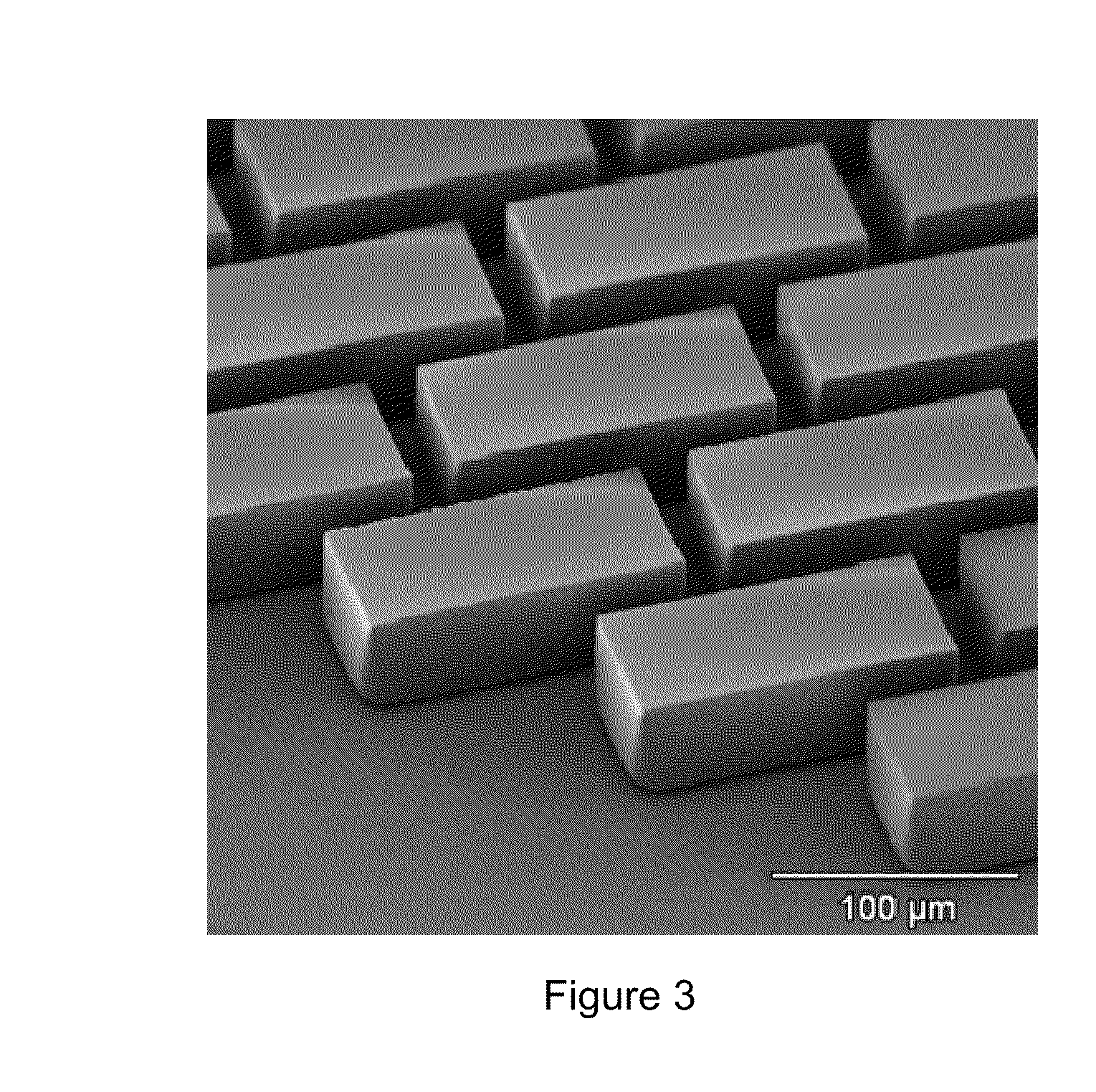Surface Acoustic Wave Diverter
- Summary
- Abstract
- Description
- Claims
- Application Information
AI Technical Summary
Benefits of technology
Problems solved by technology
Method used
Image
Examples
Embodiment Construction
[0027]A typical SAW filter device configuration is shown in FIG. 1, including a SAW substrate 100, an input IDT transducer 102 for generating SAWs in response to an electronic input signal that is applied to metal pads 102, an output IDT transducer 106 for converting SAWs back to an electronic signal that is available at metal pads 108, and acoustic absorber material 110 that is placed between each IDT and the substrate edge. Said absorber material is effective to suppress spurious response signals that would arise from reflections from edges of the SAW substrate 100 if said absorber material were not present. It is evident from this FIG. 1 that the absorber material requires a significant amount of substrate area.
[0028]FIG. 2 shows a second typical SAW filter device for which pattern absorber is utilized. The device is comprised of a SAW substrate 200, an input IDT transducer 202, and patterned acoustic absorber 210 as is taught by R. E. Chang, et al, as referenced earlier. It is e...
PUM
 Login to View More
Login to View More Abstract
Description
Claims
Application Information
 Login to View More
Login to View More - R&D
- Intellectual Property
- Life Sciences
- Materials
- Tech Scout
- Unparalleled Data Quality
- Higher Quality Content
- 60% Fewer Hallucinations
Browse by: Latest US Patents, China's latest patents, Technical Efficacy Thesaurus, Application Domain, Technology Topic, Popular Technical Reports.
© 2025 PatSnap. All rights reserved.Legal|Privacy policy|Modern Slavery Act Transparency Statement|Sitemap|About US| Contact US: help@patsnap.com



